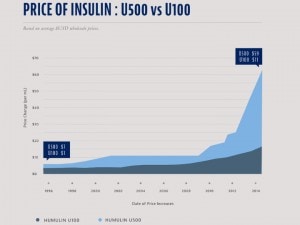Thursday, June 20th, 2019
Rebecca Ratcliffe, - The Guardian (U.K.)
 The number of people forced to flee their homes across the world has exceeded 70 million for the first time since records began, the UN’s refugee agency has warned.
The number of people forced to flee their homes across the world has exceeded 70 million for the first time since records began, the UN’s refugee agency has warned.
About 70.8 million – one in every 108 people worldwide – were displaced in 2018. This includes people who were forced to flee their homes last year, as well as people who have been unable to return home for years.
The figure is a conservative estimate, according to the study’s authors, because the impact of the crisis in Venezuela is still not known.
Launching the report, the UN high commissioner for refugees, Filippo Grandi, criticised Donald Trump and other world leaders who portray migrants and refugees as a threat to society.
“In America, just like in Europe and in other parts of the world, what we are witnessing is an identification of refugees – but not just refugees, migrants as well – with people that take away […]
Thursday, June 20th, 2019
Stephan A. Schwartz, - ECRONICON

Climate Refugees
A search of U.S. National Library of Medicine using “mental health + climate change” produces 342 papers [1]. Every one of these recognizes that temperature change, sea rise, or extreme weather events causes a negative correlation with mental health. This includes 97 papers addressing the influence on babies yet unborn when their mothers go through a climate change related event [2]. If the search is expanded a bit to “mental health + migrants”, 1,092 papers come up on the PubMed database and, once again, the mental health effects are all negative [3]. If you search the Elsevier SCOPUS database just on the search term “climate change” you get 539,366 results [4]. I note all this so precisely to make the point that there should be no fact-based argument about this; we have a lot of data telling us that climate change is coming that it causes a spectrum of mental problems, some of which are lifelong. Also, that, at this point, the nations of the world are already experiencing, as any day’s news […]
Thursday, June 20th, 2019
Karen McVeigh, - The Guardian (U.K.)

Combines harvest soybeans in Mato Grosso, Brazil. Credit: Paulo Fridman/Corbis /Getty
An area twice the size of the UK has been destroyed for products such as palm oil and soy over the last decade, according to analysis by GreenpeaceInternational. (emphasis added)
In 2010, members of the Consumer Goods Forum, including some of the world’s biggest consumer brands, pledged to eliminate deforestation by 2020, through the sustainable sourcing of four commodities most linked to forest destruction: soya, palm oil, paper and pulp, and cattle.
But analysis by Greenpeace International suggests that by the start of 2020, an estimated 50m hectares (123m acres) of forest are likely to have been destroyed in the growing demand for and consumption of agricultural products, in the 10 years since those promises were made. Its report, Countdown to Extinction, said that since 2010, the area planted with soya in Brazil has increased by 45% and palm oil production in Indonesia has risen by 75%.
Thursday, June 20th, 2019
E.A. CRUNDEN, - Think Progress

THE LONGVIEW POWER PLANT, A COAL-FIRED PLANT, STANDS ON AUGUST 21, 2018 IN MAIDSVILLE, WEST VIRGINIA. CREDIT: SPENCER PLATT/GETTY
The Environmental Protection Agency (EPA) announced on Wednesday one of President Donald Trump’s biggest efforts yet to rescue coal, even as projections show the industry in a downward spiral largely due to market forces rather than policy.
The agency unveiled the long-awaited Affordable Clean Energy (ACE) rule, designed to repeal and replace the Obama-era Clean Power Plan (CPP), which aimed to curb climate change by lowering power plant carbon dioxide emissions. The Trump administration has repeatedly argued the CPP was a federal overreach, one the ACE rule seeks to correct.
The CPP sought to reduce the power sector’s greenhouse gas emissions 32% by 2030, using 2005 levels as a baseline, largely by shifting to natural gas and renewable energy in a blow to coal. By contrast, Trump’s new ACE rule moves power to the states, giving those governments broad authority over coal emissions on a plant-by-plant basis.
“ACE will continue our nation’s environmental progress […]
Wednesday, June 19th, 2019
Liana Novick, - truthdig

Source: Redbook/Truven Health Analytics
See the full infographic (Design: Gabriella D’Amato)
With the rising cost of health insurance premiums and prescription drugs, Americans are scrambling for ways to cover lifesaving care. Injuries and illness, whether due to freak accidents or as chronic issues, often come “at a staggeringly high financial cost,” writes Jeffrey Young in HuffPost.
Sometimes this means Americans resort to crowdfunding their medical care. As Young explains, “more than 50 million donors contributed more than $5 billion to GoFundMe campaigns between 2010 and 2017.” For the 7.5 million Americans with diabetes who rely on insulin to survive, it might mean international travel. As Emily Rauhala reports in The Washington Post, Americans who can’t afford insulin here are making trips to Canada.
“It felt like we were robbing the pharmacy,” said Quinn Nystrom, a Type-1 diabetic who joined a caravan driving from Minnesota to Fort Frances, Ontario. There, she paid $1,200 for a supply of insulin that would have cost $12,000 at home.
The price of insulin has risen considerably from when Nystrom was diagnosed with diabetes as […]










